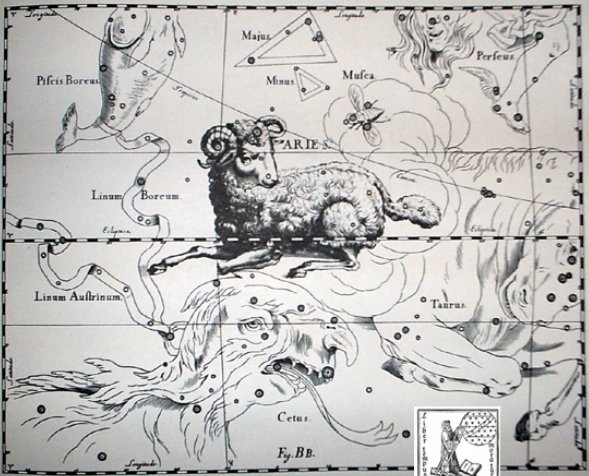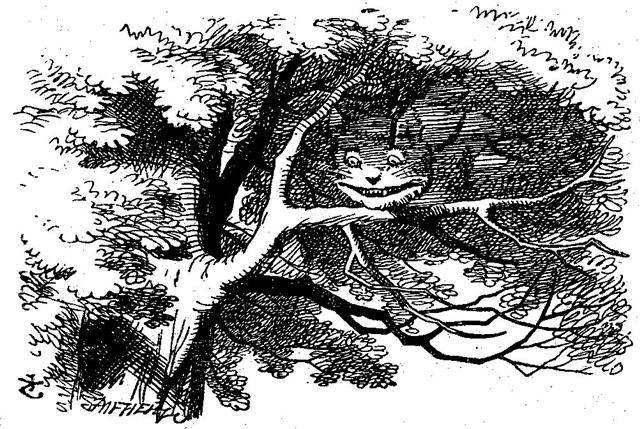In my model with right ascension days, with the Gregorian calendar for easier understanding, and incorporating the effects of the precession, it is now possible to introduce the dates when Sheratan and Mesarthim (The Pair of Signs, Al Sharatain, β and γ Arietis) were at the northern spring equinox:
The hint Crow probably alluded to the Raven constellation, 120 days later. And a net was used for catching the prow of the night ship at dawn:
... In the arabesque of interlaced motifs, one can mark those where the theme of 'pulling down the structure' is in evidence. The powerful Maori hero Whakatau, bent on vengeance, laid hold of the end of the rope which had passed round the posts of the house, and, rushing out, pulled it with all his strength, and straightaway the house fell down, crushing all within it, so that the whole tribe perished, and Whakatau set it on fire. This is familiar. At least one such event comes down dimly from history. It happened to the earliest meetinghouse of the Pythagorean sect, and it is set down as a sober account of the outcome of a political conflict, but the legend of Pythagoras was so artfully constructed in early times out of prefabricated materials that doubt is allowable. The essence of true myth is to masquerade behind seemingly objective and everyday details borrowed from known circumstances. However that may be, in many other stories the destruction of the building is linked with a net. Saxo's Amlethus does not pull down pillars; he reappears at the banquet set by the king for his own supposed funeral, like Great-Land-Master himself. He throws the knotted carpet net prepared by his mother over the drunken crowd and burns down the hall. In Japan the parallel does not go farther than that but it has its own relevance nevertheless. It suggests the fall of the House of Atreus. The net thrown by Clytemnestra over the king struggling in his bath cannot have come in by chance. But this is an uncertain lead as yet. The Sacred Book of the ancient Maya Quiche, the famous Popol Vuh (the Book of Counsel) tells of Zipacna, son of Vucub-Caquix (= Seven Arata). He sees 400 youths dragging a huge log that they want as a ridgepole for their house. Zipacna alone carries the tree without effort to the spot where a hole has been dug for the post to support the ridgepole. The youths, jealous and afraid, try to kill Zipacna by crushing him in the hole, but he escapes and brings down the house on their heads. They are removed to the sky, in a 'group', and the Pleiades are called after them. Then there is a true avanger-of-his-father, the Tuamotuan Tahaki, who, after long travels, arrive in the dark at the house of the goblin band who tortured his father. He conjures upon them 'the immense cold of Havaiki' (the other world) which puts them to sleep. Then Tahaki gathered up the net given to him by Kuhi, and carried it to the door of the long house. He set fire to the house. When the goblin myriads shouted out together 'Where is the door?' Tahaki called out: 'Here is it.' They thought it was one of their own band who had called out, and so they rushed headlong into the net, and Tahaki burned them up in the fire. What the net could be is known from the story of Kaulu. This adventurous hero, wanting to destroy a she-cannibal, first flew up to Makalii the great god, and asked for his nets, the Pleiades and the Hyades, into which he entangled the evil one before he burned down her house. It is clear who was the owner of the nets up there. The Pleiades are in the right hand of Orion on the Farnese Globe, and they used to be called the 'lagobolion' (hare net). The Hyades were for big game ... (Hamlet's Mill) The accumulation of 'stations' at the First Point of Aries is striking and it must have meant Sheratan and Mesarthim were important. Already the Babylonians had these 'twin stars' at their first station for the Sun - on his way down to Spica. The Chinese structure began at Spica (Ana-roto, the star pillar in the center) but the Babylonian structure ended at Virgo. .
In Gb7-26, where 72 * 6 = 432 points to Gb7-22 (and to 72 * 2 = 144) we can at left (in the past) perceive a 'heart' in form of a rounded head (or nut) face down inside a rising fish with her mouth closed. Instead of counting with the precise value of π they anciently used the approximation 22 / 7 and this in turn made it possible to play with July 22 (if written 22-7) as a position corresponding to (resembling) that of π. Gb7-22 (7-22) could therefore indicate the reverse, viz. from where to begin the counting up to π. The day number for July 22 was 203 and Gb7-22 was glyph 203 counted from the beginning of side b. 229 (side a) + 203 = 432 = 18 * 24 = 8 * 54 = 16 * 27. At right, and drawn as a separate unit, is a calabash (hipu) which probably illustrated the next generation ('offspring', 'fruit'). Where a heart or skull was buried there should be a new growth.
... Skulls with incised carvings, imbued with power by Makemake, were placed in the fowl house to promote the egg-laying capacity of the occupants ... (Peter H. Buck , Vikings of the Pacific.) ... The skulls of the chiefs are for the chicken, so that thousands may be born' (te puoko ariki mo te moa, mo topa o te piere) ... As long as the source of mana is kept in the house, the hens are impregnated (he rei te moa i te uha), they lay eggs (he ne'ine'i te uha i te mamari), and the chicks are hatched (he topa te maanga) ... (The Eighth Island)
... Ipu is the Tahitian word corresponding to hipu. Mahigo means 'children'. I can translate the words of Bishop Jaussen into: 'The children (Mahigo) and the small calabashes are here mentioned together. In their prayers, when asking Makemake for 'small calabashes', it was especially children who were meant.' Children and calabashes, we have now arrived at the first common factor between our example text [Aa2-7--8] and the Hawaiian myth about Ulu and Mokuola - the importance of children, the 'offspring' (hua) ... In Popol Vuh it was described as follows: ... The state of the tree loomed large in their thoughts, because it came about at the same time the head of One Hunaphu was put in the fork.
The Xibalbans said among themselves: 'No one is to pick the fruit, nor is anyone to go beneath the tree', they said. They restricted themselves, all of Xibalba held back. It isn't clear which is the head of One Hunaphu; now it's exactly the same as the fruit of the tree. Calabash came to be its name, and much was said about it. A maiden heard about it, and here we shall tell of her arrival. And here is the account of a maiden, the daughter of a lord named Blood Gatherer. And this is when a maiden heard of it, the daughter of a lord. Blood Gatherer is the name of her father, and Blood Moon is the name of the maiden.
And when he heard the account of the fruit of the tree, her father retold it. And she was amazed at the account: I'm not acquainted with that tree they talk about. It's fruit is truly sweet! they say, I hear, she said. Next, she went all alone and arrived where the tree stood. It stood at the Place of Ball Game Sacrifice. What? Well! What's the fruit of this tree? Shouldn't this tree bear something sweet? They shouldn't die, they shouldn't be wasted. Should I pick one? said the maiden. And then the bone spoke; it was there in the fork of the tree: Why do you want a mere bone, a round thing in the branches of a tree? said the head of One Hunaphu when it spoke to the maiden. You don't want it, she was told. I do want it, said the maiden. Very well. Stretch out your right hand here, so I can see it, said the bone. Yes, said the maiden. She stretched out her right hand, up there in front of the bone. And then the bone spit out its saliva, which landed squarely in the hand of the maiden. And then she looked in her hand, she inspected it right away, but the bone's saliva wasn't in her hand. It is just a sign I have given you, my saliva, my spittle. This, my head, has nothing on it - just bone, nothing of meat. It's just the same with the head of a great lord: it's just the flesh that makes his face look good. And when he dies, people get frightened by his bones. After that, his son is like his saliva, his spittle, in his being, whether it be the son of a lord or the son of a craftsman, an orator. The father does not disappear, but goes on being fulfilled. Neither dimmed nor destroyed is the face of a lord, a warrior, craftsman, an orator. Rather, he will leave his daughters and sons. So it is that I have done likewise through you. Now go up there on the face of the earth; you will not die. Keep the word. So be it, said the head of One and Seven Hunaphu - they were of one mind when they did it ...
|
||||||||||||||||||||||||||||||||||||||||||||||||||||||||||||||||||||||||||||||||||||||||||||||||||||||||||||||||||||||||||||||||||||||||||||||||||||||||||||||||||||||||||||||||||||||||||||||||||||||||||||||||||||||||||||||||||||||||||||||||||||||||||||||||||||||||||












